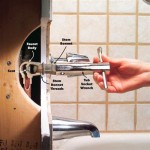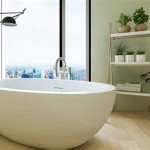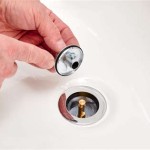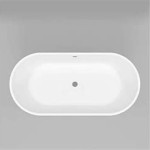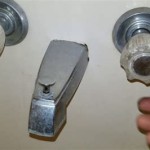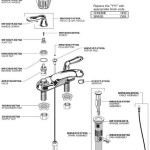What Does An Accessible Bathtub Mean?
An accessible bathtub, often referred to as a disability bathtub or handicap bathtub, is a specially designed bathing fixture intended to allow individuals with mobility limitations, disabilities, or age-related challenges to bathe safely and comfortably. These bathtubs incorporate a range of features that address common difficulties experienced when using a standard bathtub, such as stepping over a high threshold, maneuvering within a confined space, and maintaining a secure grip.
The primary goal of an accessible bathtub is to promote independence and reduce the risk of falls and injuries, thereby enhancing the overall quality of life. By providing a safer and more user-friendly bathing experience, these bathtubs empower individuals to maintain their personal hygiene and well-being with greater ease and confidence. The design considerations extend to both entering and exiting the tub, as well as the bathing process itself.
Accessible bathtubs are not a one-size-fits-all solution. They come in various configurations, each addressing a specific set of needs and preferences. Selecting the appropriate type requires a thorough assessment of the individual's physical capabilities, the available bathroom space, and the desired level of assistance. Understanding the key features and variations is essential for making an informed decision.
Key Features of Accessible Bathtubs
Several key features distinguish accessible bathtubs from standard bathtubs. These features are specifically engineered to enhance safety, convenience, and accessibility for individuals with limited mobility. The core components often include a low-entry threshold, built-in seating, grab bars, and user-friendly controls.
Low-Entry Threshold: One of the most significant challenges for individuals with mobility limitations is stepping over the high wall of a traditional bathtub. Accessible bathtubs address this issue by featuring a significantly lower threshold, often just a few inches high. Some models incorporate a watertight door that allows the individual to walk directly into the tub without stepping over any barrier. This feature drastically reduces the risk of slips and falls during entry and exit. The threshold height is a critical consideration when selecting an accessible bathtub, as it directly impacts the ease and safety of entering and exiting the tub.
Built-In Seating: Many accessible bathtubs incorporate built-in seating, providing a stable and comfortable place for the individual to sit while bathing. The seat height is typically designed to be similar to that of a standard chair, allowing for a smooth and controlled transfer from a wheelchair or walker. Some seats are contoured for added comfort and support. Built-in seating eliminates the need to lower oneself to the bottom of the tub, reducing strain on joints and muscles. This feature is particularly beneficial for individuals with arthritis, joint pain, or muscle weakness. The material of the seat should be durable, slip-resistant, and easy to clean.
Grab Bars: Strategically placed grab bars are essential for providing stability and support within the accessible bathtub. These bars are typically made of sturdy, corrosion-resistant materials and are securely mounted to the tub walls. Grab bars assist with entering and exiting the tub, as well as with maneuvering while bathing. They provide a secure handhold, reducing the risk of falls and injuries. The placement of grab bars should be carefully considered to meet the individual's specific needs and reach. Common locations include near the entrance, along the side walls, and near the seat. The diameter of the grab bars should be comfortable to grip, and the surface should be textured to prevent slipping.
User-Friendly Controls: Accessible bathtubs often feature user-friendly controls that are easy to reach and operate, even with limited dexterity. These controls may include large, easy-to-grip knobs, push-button controls, or electronic touchpads. The controls should be clearly labeled and intuitive to use. Features like anti-scald valves are important for preventing accidental burns. The positioning of the controls should be convenient for the individual to reach while seated. Digital controls may offer additional features such as temperature memory or preset bathing programs.
Types of Accessible Bathtubs
The market offers a variety of accessible bathtub designs, each catering to different needs and preferences. Understanding the different types is crucial for selecting the best option for a particular individual and bathroom layout. The most common types include walk-in bathtubs, transfer bathtubs, and bariatric bathtubs.
Walk-In Bathtubs: Walk-in bathtubs are perhaps the most well-known type of accessible bathtub. They feature a watertight door that allows the individual to enter the tub without stepping over a high threshold. The individual typically sits on a built-in seat, and the door is sealed before the tub is filled with water. Once the bathing process is complete, the water is drained, and the door is opened to allow the individual to exit. Walk-in bathtubs offer a high level of safety and convenience, particularly for individuals with significant mobility limitations. They often include additional features such as whirlpool jets, air jets, and aromatherapy systems. The door mechanism is a critical component, as it must be reliably watertight and easy to operate. Quick-drain systems are also desirable to minimize the waiting time before exiting the tub.
Transfer Bathtubs: Transfer bathtubs are designed to facilitate a safe and easy transfer from a wheelchair to the bathtub seat. They typically feature a wider side wall and a contoured seat that allows for a lateral transfer from a wheelchair. The seat may be fixed or adjustable in height. Transfer bathtubs often include grab bars strategically positioned to assist with the transfer process. The main difference between a transfer tub and a walk-in tub is that transfer tubs still require some degree of stepping and maneuvering to enter, while walk-in tubs eliminate the need to step over a high threshold. Transfer tubs are suitable for individuals who have some upper body strength and balance but require assistance with transferring from a wheelchair. The dimensions of the tub and the positioning of the seat are crucial for accommodating the individual's wheelchair.
Bariatric Bathtubs: Bariatric bathtubs are designed to accommodate individuals with larger body sizes. They are typically wider and deeper than standard bathtubs, and they have a higher weight capacity. Bariatric bathtubs often include reinforced frames and heavy-duty components to ensure stability and safety. They may also feature powered lifting and lowering mechanisms to assist with entry and exit. These bathtubs are designed to provide a comfortable and dignified bathing experience for individuals who may face challenges using standard bathing fixtures. The weight capacity and interior dimensions are primary considerations when selecting a bariatric bathtub. The inclusion of features like hand-held showers and strategically placed grab bars can further enhance the user experience.
Factors to Consider When Choosing an Accessible Bathtub
Selecting the right accessible bathtub requires careful consideration of several factors, including the individual's specific needs, the available bathroom space, and the budget. A thorough assessment of these factors will help ensure that the chosen bathtub meets the individual's requirements and provides a safe, comfortable, and accessible bathing experience.
Individual Needs: The individual's physical capabilities and limitations are the most important factors to consider. This includes their ability to walk, stand, sit, and transfer. It's also important to consider any specific medical conditions or disabilities that may affect their ability to bathe safely and comfortably. Consulting with a healthcare professional or occupational therapist can provide valuable insights into the individual's needs and help guide the selection process. Factors to consider may include the degree of assistance required for entry and exit, the need for built-in seating, and the preference for hydrotherapy features.
Bathroom Space: The size and layout of the bathroom will significantly impact the choice of accessible bathtub. Measure the available space carefully and consider the placement of existing fixtures, such as the toilet and sink. Ensure that there is sufficient clearance around the bathtub for maneuvering with a wheelchair or walker. Some accessible bathtubs are designed to fit into the same space as a standard bathtub, while others may require more extensive modifications. Consider the placement of the door and the direction in which it swings. It may be necessary to reconfigure the bathroom layout to accommodate the accessible bathtub. A professional bathroom designer can provide valuable assistance with space planning and layout optimization.
Budget: Accessible bathtubs can range in price from several thousand dollars to tens of thousands of dollars, depending on the features and complexity of the design. Consider the budget carefully and prioritize the features that are most important. Compare prices from different manufacturers and suppliers, and look for potential rebates or financial assistance programs. Installation costs can also add significantly to the total expense. Get quotes from multiple contractors and ensure that they are experienced in installing accessible bathtubs. While it's important to stay within budget, it's also crucial to prioritize safety and functionality. Investing in a high-quality accessible bathtub can significantly improve the individual's quality of life and reduce the risk of injuries.
Installation: Professional installation is highly recommended for accessible bathtubs to ensure that they are properly installed and meet all safety standards. The installation process may involve plumbing modifications, electrical work, and structural reinforcements. Choose a contractor who is licensed and insured and has experience in installing accessible bathtubs. Ensure that the contractor provides a detailed estimate of the installation costs and that they are familiar with the local building codes and regulations. A properly installed accessible bathtub will provide years of safe and reliable use.

What Is An Ada Tub All About Compliant Bathtubs

60 X 32 ½ Ada Bathtub 3 Pieces Left Drain Freedom Shower

The Good Bad Of Ada Accessible Hotel Bathrooms Wheelchair Travel

Ada Bathshower 60 X 33 1 Piece Left Drain Freedom Showers

The Good Bad Of Ada Accessible Hotel Bathrooms Wheelchair Travel

The Ultimate Comparison Accessible Bathtubs Vs Showers Bath Fitter Pittsburgh

The Good Bad Of Ada Accessible Hotel Bathrooms Wheelchair Travel

Benefits Of Low Profile Bathtub For Safe And Accessible Bathing

Accessible Showers Tub Cut Vs Barrier Free Shower

Walk In Baths Accessible Bathtubs For The Elderly
Related Posts

